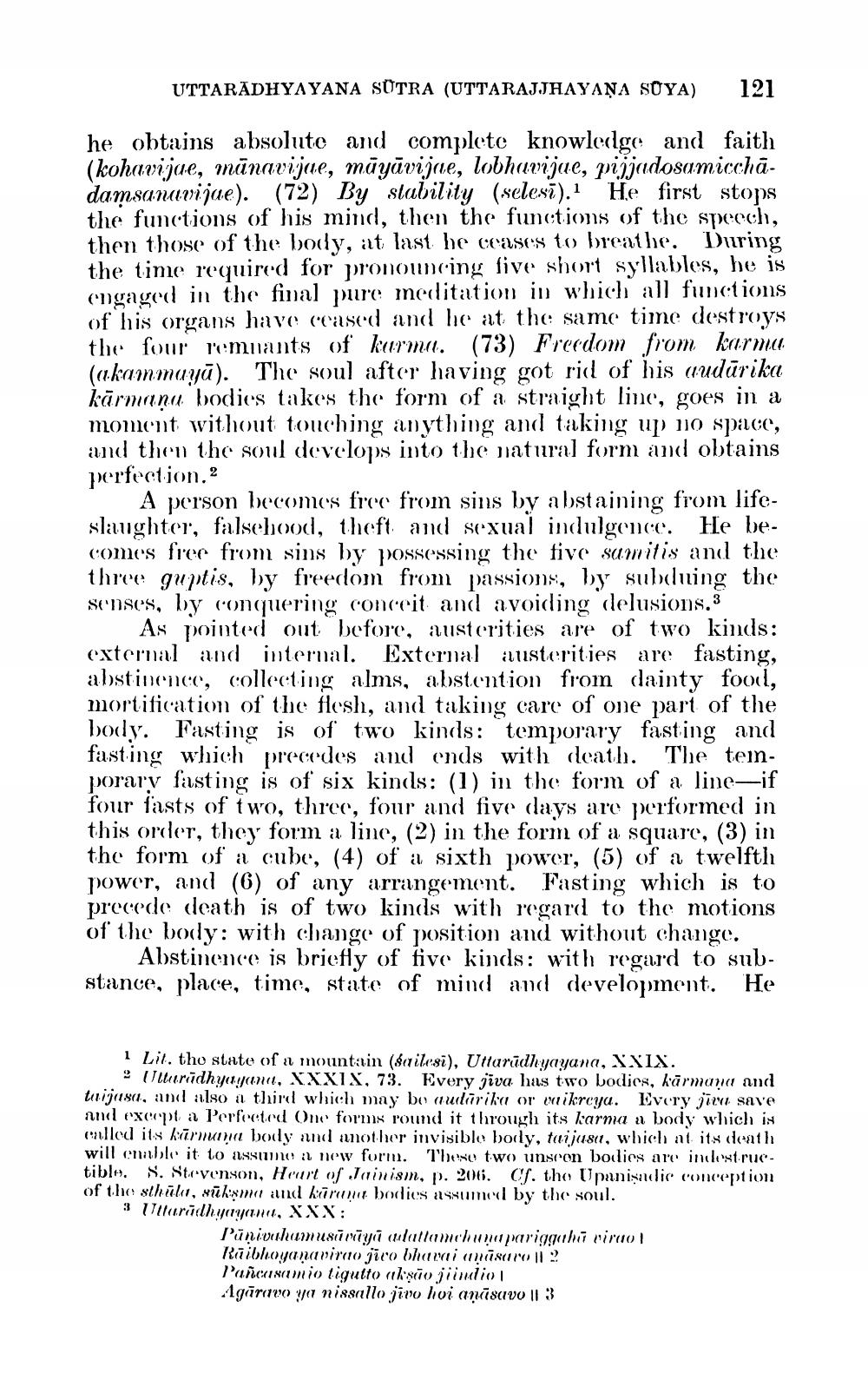________________
UTTARADHYAYANA SUTRA (UTTARAJJHAYANA SUYA) 121
he obtains absolute and complete knowledge and faith (kohavijae, mānavijae, māyāvijae, lobhavijae, pijjadosamicchādamsanavijae). (72) By stability (selesi). He first stops the functions of his mind, then the functions of the speech, then those of the body, at last he ceases to breathe. During the time required for pronouncing five short syllables, he is engaged in the final pure meditation in which all functions of his organs have ceased and he at the same time destroys the four remnants of karma. (73) Freedom from karma (akammaya). The soul after having got rid of his audūrika karmana bodies takes the form of a straight line, goes in a moment without touching anything and taking up no space, and then the soul develops into the natural form and obtains perfection.2
A person becomes free from sins by abstaining from lifeslaughter, falsehood, theft and sexual indulgence. He becomes free from sins by possessing the five samitis and the three guptis, by freedom from passions, by subduing the senses, by conquering conceit and avoiding delusions.3
As pointed out before, austerities are of two kinds: external and internal. External austerities are fasting, abstinence, collecting alms, abstention from dainty food, mortification of the flesh, and taking care of one part of the body. Fasting is of two kinds: temporary fasting and fasting which precedes and ends with death. The temporary fasting is of six kinds: (1) in the form of a line-if four fasts of two, three, four and five days are performed in this order, they form a line, (2) in the form of a square, (3) in the form of a cube, (4) of a sixth power, (5) of a twelfth power, and (6) of any arrangement. Fasting which is to precede death is of two kinds with regard to the motions of the body: with change of position and without change. Abstinence is briefly of five kinds: with regard to substance, place, time, state of mind and development. He
1 Lit. the state of a mountain (sailesi), Uttaradhyayana, XXIX.
2 Uttaradhyayana, XXXIX, 73. Every jiva has two bodies, kārmana and taijasa, and also a third which may be audarika or vaikreya. Every jira save and except a Perfected One forms round it through its karma a body which is called its karmana body and another invisible body, taijasa, which at its death will enable it to assume a new form. These two unseen bodies are indestructible. S. Stevenson, Heart of Jainism, p. 206. Cf. the Upanisadic conception of the sthula, sūkṣma and karana bodies assumed by the soul. 3 Uttaradhyayana, XXX:
Pāṇivahamusārāyā adattamehunapariggaha viraot Raibhoyanavirao jico bhavai anasaro || 2 Pañcasamio tigutto akṣão jiindio Agaravo ya nissallo jivo hoi aņāsavo || 3




